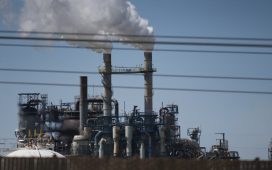California recently extended the life of multiple gas plants to provide power to the state. This is an example of the role natural gas will play even in jurisdictions that have historically tried to avoid it. Global energy use is increasing under all projections and over the next two decades is estimated to increase 34% under IEA scenarios; developed countries are not reducing energy use regardless of policy goals and many developing countries deserve the same quality of life. An increasing amount of this power is coming from renewables which are cleaner but not as reliable. This results in fossil fuels being used to supplement the power demand and natural gas has the lowest GHG emissions of these options. Whether you think it is part of a clean global energy mix or whether you believe its phase-out is essential, it will increasingly be consumed by believers and skeptics alike.
Electricity generation in many developed markets comes from natural gas, coal, nuclear, hydro, wind and solar. In 2019, the U.S.’s generation mix was 38% natural gas, 23% coal, 20% nuclear and 17% renewables as per the IEA (there is a small remaining “other” component so that you don’t immediately discount my writing and math). These power sources all have different pros and cons, including environmental. The main difference is that some are intermittent (primarily wind and solar due to weather) while others are capable of providing a steady baseload or ramping up at a moment’s notice to meet peak demand.
California’s recent experiences offer a sober look at trade-offs. As the state increased its renewable capacity, it created a grid where a larger portion of the generation mix may not be available at certain times. To help with this rapid change California looked to import an increasing amount of electricity from neighbouring states. California now imports a third of its power from neighbours and it is a mix of gas, coal, wind, solar, and hydro in the North. Natural gas is providing a growing share of imports, because at the exact moment that California experiences intermittent renewable generation, neighbouring states are as well.
Without nuclear or a battery breakthrough, states that prioritize renewables will need to use natural gas to fill the gap, or nuclear or coal. California itself is now looking as if it will use more natural gas than expected, evidenced by the California Water Resources Control Board’s recent decision to extend the life of four natural gas plants it had flagged for retirement due to environmental regulations around water use. The continuation of these plants is in response to the recent blackouts in an effort to provide more reliable power. Diesel fired generators have also been deployed across many communities in North America to help support the reliability of local power grids. “The use of natural gas fueled generators in place of diesel generators can provide immediate cost and GHG reduction benefits,” says Curtis Philippon, Chief Executive Officer of Certarus, the nation’s largest bulk compressed natural gas (CNG) provider. “Natural gas is complementary to renewables and supports overall policy objectives of reducing GHG emissions.”
Renewables at scale require some sort of baseload power source and Texas is a great example of this. Texas, the number one state for installed wind power, complements its renewable share with significant gas generation. As other states talk about following this example, they often focus on the number of installed wind farms instead of the baseload natural gas that was required to achieve this.
At the same time that stakeholders in California were targeting natural gas for retirement, in many other states it was replacing coal with a cleaner-burning fuel. This trend actually saw coal plant retirements accelerate ahead of many estimates for regulated timelines. Cost competitiveness vs. coal was the driver for this decisive victory thanks to low cost natural gas from shale. Despite a pro-coal administration, American coal retirements actually reached a record this previous year thanks to natural gas, with 14 GW of capacity closing. The advantages of the competition-driven shift are clear as voluntary retirements are able to occur ahead of many regulated schedules that require timed phase outs and reimbursement.
Gas is actually causing coal generation to decline faster in the United States than in the European Union. In 2019, emissions from the United States fell by 2.9% as the IEA referenced that 45% cheaper gas prices drove the reduced emissions thanks to switching from coal to gas powered generation. China has begun to follow this playbook, committing to increase natural gas to 15% of its energy consumption by 2030 as growing power demands are driving a coal plant building boom. For countries with rapidly growing power demand like China and India, any cheaper natural gas they can import today is directly replacing coal. In an interconnected world all emissions decisions need to be thought of globally and the distribution of cheap natural gas is a key lever to incentivize other countries to stop using coal. Renewables usage is very difficult to transfer between countries with current power storage technology, while natural gas can be easily moved around the globe and therefore is a key tool to rapidly reduce global emissions.
Natural gas is cheap, reliable, transportable, and has the ability to replace higher emission fuel sources globally that are still being built today. In some jurisdictions it is being rapidly promoted and in others it is being persecuted but still taking more of the energy mix in both.








